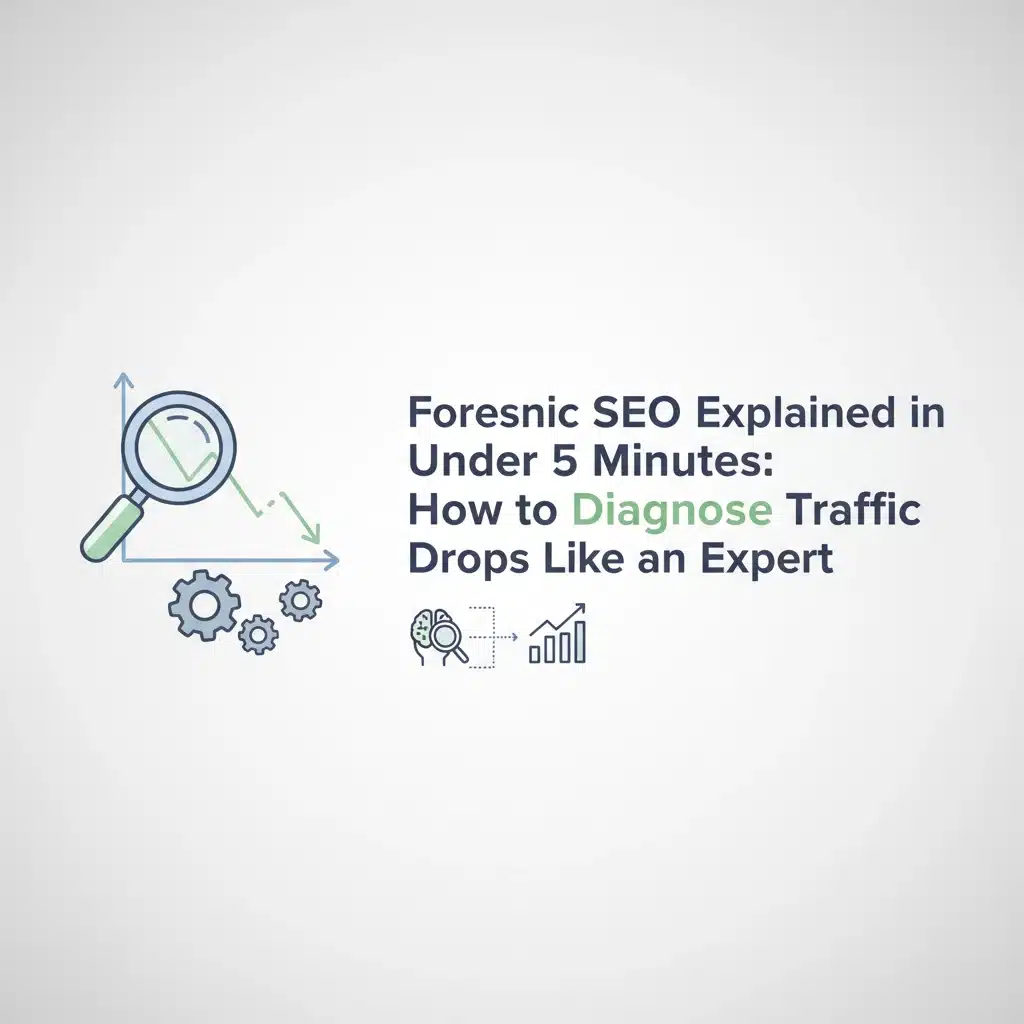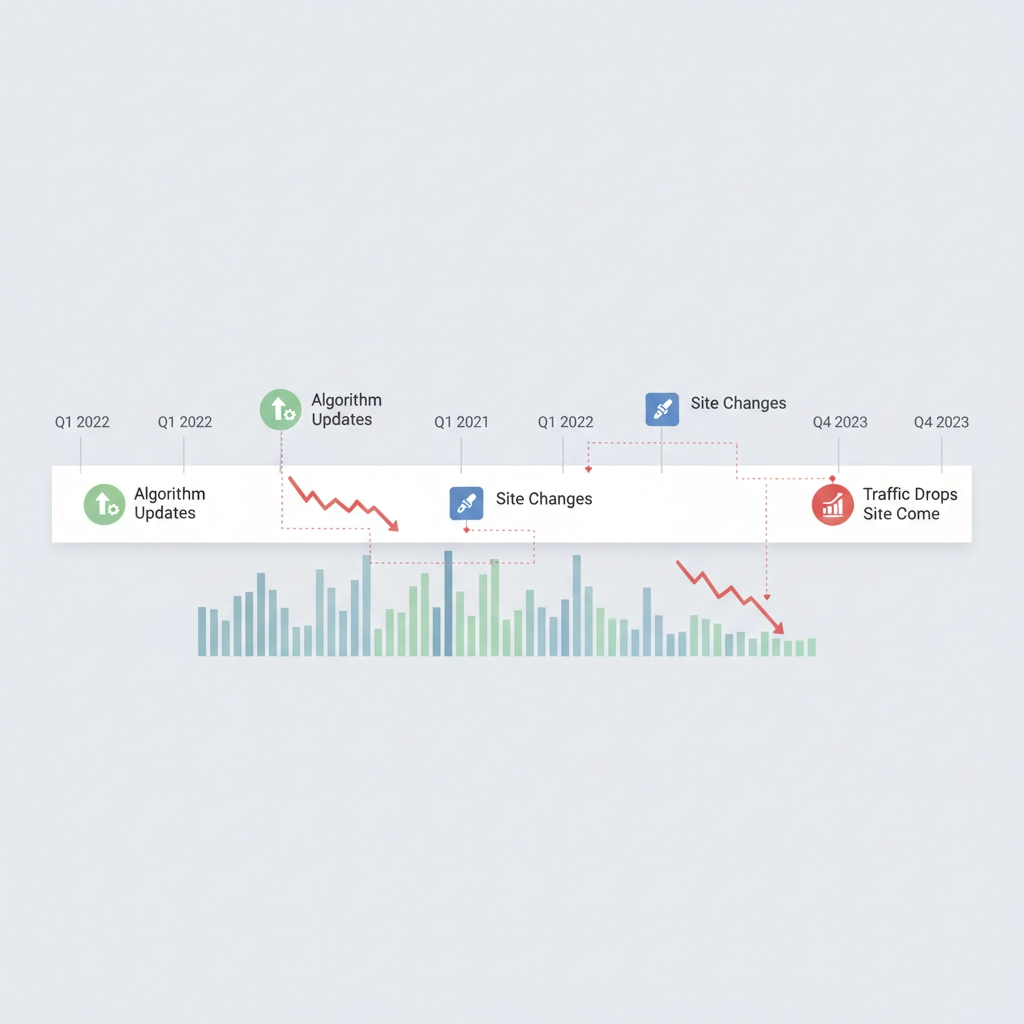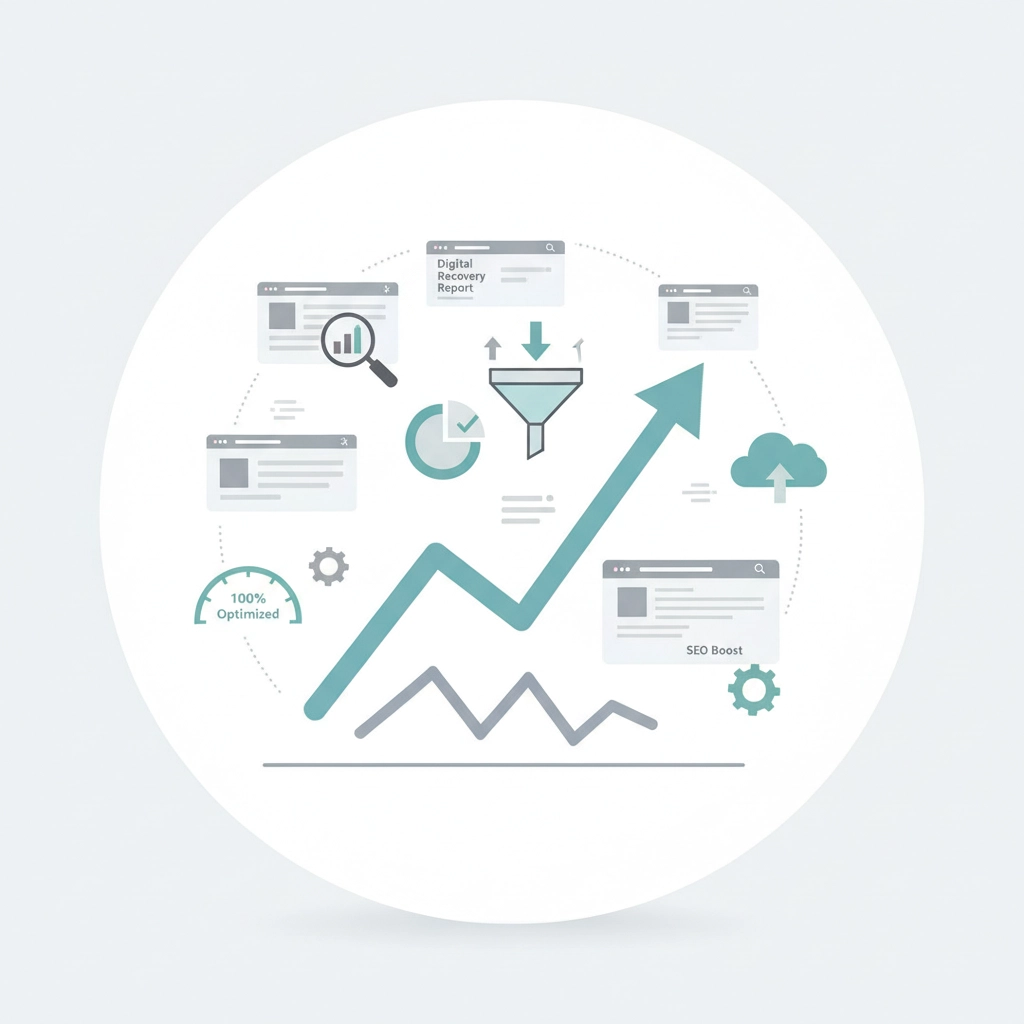73% of websites that experience sudden traffic drops never fully recover their rankings. That's not because recovery is impossible: it's because most business owners approach traffic loss the wrong way. They panic, make random changes, or worse, ignore the problem hoping it'll fix itself.
Here's the thing: when your organic traffic tanks, you need forensic SEO. Not regular SEO. Not "let's try some new keywords" SEO. Forensic SEO: the systematic, detective-style investigation that uncovers exactly why your visibility disappeared and how to get it back.
What Is Forensic SEO?
Forensic SEO is a specialized audit process designed specifically to recover lost search visibility rather than build new traffic. Think CSI for your website. When your rankings drop, forensic SEO involves systematically investigating every possible cause: algorithm updates, technical issues, penalties, competitor actions, or content problems: to identify the root cause and create a recovery plan.
Unlike traditional SEO audits that look for opportunities to improve, forensic SEO operates like detective work. You're not looking for what could be better; you're hunting for what went wrong and when.
The $10,000 Question: Why Did Your Traffic Drop?
Before you can fix anything, you need to understand that traffic drops fall into six main categories:
Manual Penalties happen when Google's human reviewers determine your site violates their guidelines. You'll get a notification in Google Search Console, making these the easiest to identify but often the hardest to fix.
Algorithmic Penalties are more subtle. These occur when algorithm updates: like Google's Core Updates, Helpful Content Updates, or Page Experience updates: demote your site. No notification arrives; your traffic just starts bleeding.
Technical Issues often emerge after site migrations, hosting changes, or updates. A single misplaced redirect or broken canonical tag can devastate rankings overnight.
Content Problems develop when your pages no longer match search intent, lack depth compared to competitors, or have been duplicated across your site.
Link Profile Issues include lost authoritative backlinks, negative SEO attacks, or previous link building that now violates Google's current standards.
External Factors encompass everything from increased competition to seasonal changes, new SERP features stealing clicks, or broader market shifts affecting search behavior.
The 5-Step Forensic SEO Process
Step 1: Verify the Drop Is Real
Data problems account for approximately 25% of reported traffic drops. Before investigating ranking issues, confirm your analytics are accurate. Check Google Analytics, Search Console, and any third-party tools you use. Look for:
- Analytics code changes or tracking interruptions
- Filter modifications that exclude traffic
- Attribution model changes
- Server log inconsistencies
If multiple data sources show the same decline pattern, you have a real problem worth investigating.
Step 2: Timeline Analysis
Identify exactly when your traffic started dropping. Was it gradual over months or sudden over days? Cross-reference this timeline with:
- Google algorithm update dates
- Site changes (redesigns, migrations, content updates)
- Technical modifications (hosting, CDN, security certificates)
- Marketing campaign launches or changes
- Competitor analysis tools to see if they gained while you lost
Step 3: Search Console Deep Dive
Google Search Console contains the most critical forensic evidence. Examine:
- Manual Actions (under Security & Manual Actions)
- Coverage errors that spiked around your drop date
- Core Web Vitals issues affecting user experience
- Mobile usability problems
- Structured data errors
- Query performance changes (which keywords dropped most)
- Page performance changes (which URLs lost the most visibility)
Step 4: Technical Forensics
Run comprehensive technical audits focusing on:
- Crawlability: Can search engines access all important pages?
- Indexability: Are pages being properly indexed or excluded?
- Site Speed: Have Core Web Vitals scores deteriorated?
- Mobile Experience: Does your site work flawlessly on mobile devices?
- Security: Any malware, hacking, or security certificate issues?
- Redirect Chains: Are redirects working properly after recent changes?
Step 5: Content and Competition Analysis
Analyze your most affected pages against current top-ranking competitors:
- Content depth and comprehensiveness
- Search intent alignment
- Information freshness and accuracy
- User experience factors (readability, structure, multimedia)
- Topic coverage gaps
- Technical optimization differences
The Tools Every Forensic SEO Detective Needs
Free Tools:
- Google Search Console (essential for identifying penalties and technical issues)
- Google Analytics (traffic pattern analysis)
- Google PageSpeed Insights (Core Web Vitals assessment)
- Google's Mobile-Friendly Test
Professional Tools:
- Screaming Frog (comprehensive site crawling)
- SEMrush or Ahrefs (competitor analysis and backlink auditing)
- GTmetrix (detailed performance analysis)
- Wayback Machine (historical site comparison)
The key isn't having every tool: it's knowing which data points matter most for your specific situation.
Recovery Timeline: What to Expect
Here's what most businesses don't understand: forensic SEO recovery rarely happens overnight. Depending on the issue type:
- Technical fixes can show improvements within 2-4 weeks after implementation
- Content improvements typically require 6-12 weeks to impact rankings
- Penalty recovery often takes 3-6 months, sometimes longer for severe violations
- Algorithmic recovery depends on the next relevant algorithm refresh, which could be months away
During recovery, resist the urge to make constant changes. Implement fixes systematically, monitor results, and give each change time to take effect before adding new modifications.
When to Call in Professional Help
Some forensic SEO scenarios require specialized expertise that goes beyond basic troubleshooting. Consider professional SEO consulting when:
- You've identified multiple potential causes but can't determine which is primary
- Technical issues require development resources you don't have internally
- Penalty recovery demands experience with Google's reconsideration process
- Traffic drops exceed 50% and recovery attempts have failed
- You need comprehensive competitor analysis and market positioning strategy
The Bottom Line on Traffic Recovery
Forensic SEO isn't just about fixing what's broken: it's about understanding your site's vulnerabilities so problems don't happen again. The businesses that recover fastest treat traffic drops as learning opportunities, not just crises to solve.
Remember: 73% of sites never fully recover because they guess instead of investigating. Don't be part of that statistic. When your traffic drops, approach it like the detective case it actually is. Gather evidence, eliminate possibilities systematically, and never make assumptions about what went wrong.
Your rankings: and your revenue: depend on getting the diagnosis right the first time.
Ready to start your forensic investigation? Book a consultation to discuss your specific traffic drop situation and get a professional assessment of what's really going on with your search visibility.










